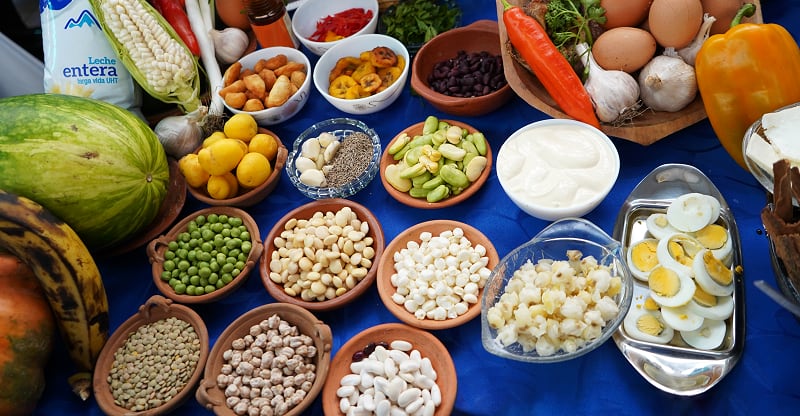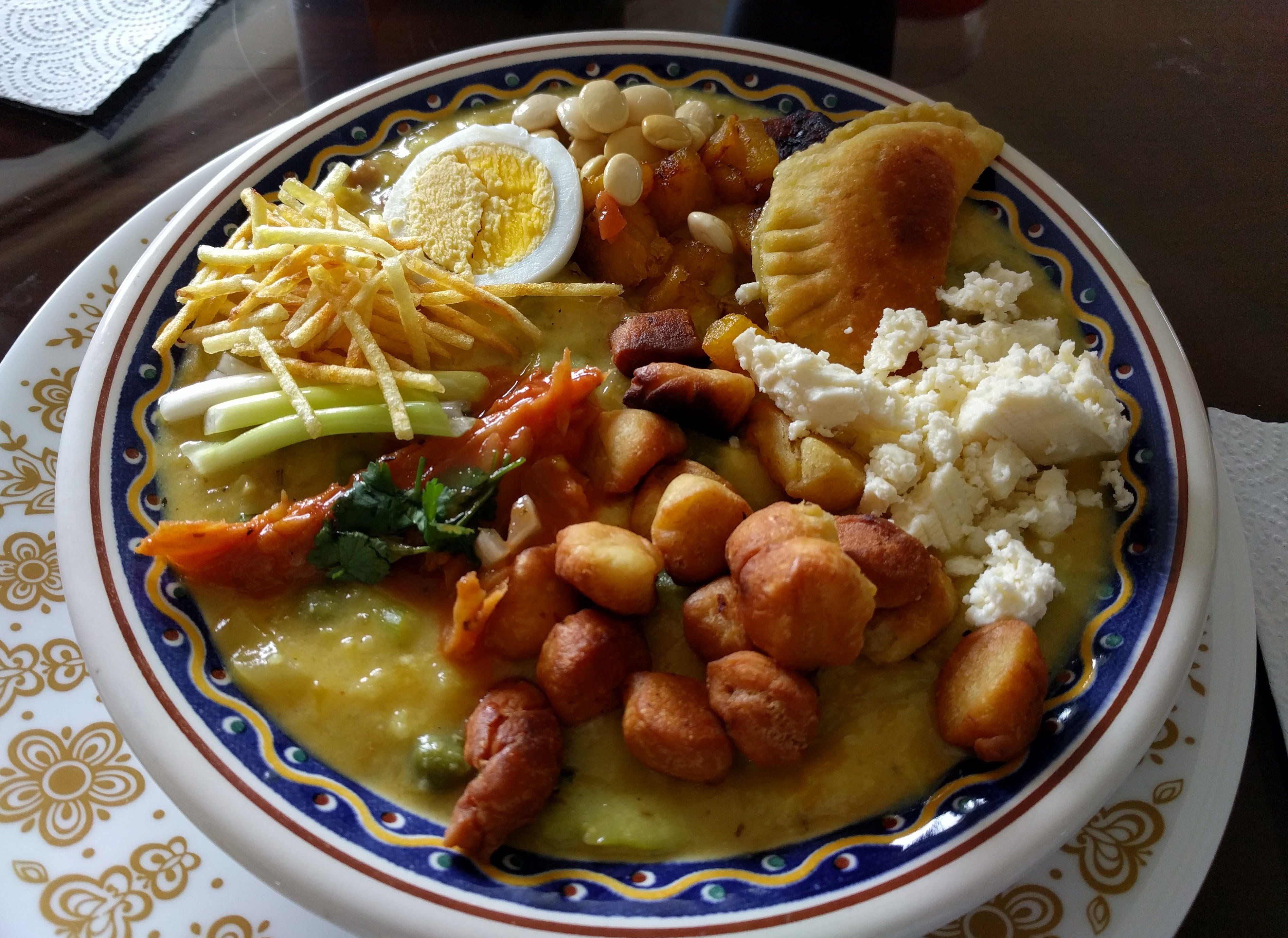:quality(85)/cloudfront-us-east-1.images.arcpublishing.com/infobae/XT3P4ES56JGCNPL4OHBUKSW7QA.png 420w)
The Catholic world commemorates Holy Week, a reminder of the passion and death of Jesus Christ that begins with the representation of his entry into Jerusalem, with Palm Sunday, and ends with Resurrection Sunday. For Catholics, this week becomes a time of reflection and preparation for Easter. In Ecuador, there are traditions that are common in Catholicism, such as processions, but there are also unique events, such as the Drag of Caudas, which is the only funeral commemoration in homage to Christ, and Fanesca, a soup whose ingredients are reminiscent of Jesus and his apostles.
La Fanesca is, like so many in Latin America, a tradition that merges indigenous cosmogony with the religious beliefs that arrived in the colony. The soup that Ecuadorians eat at Easter is also known as Ushucuta. This dish ends with abstinence and fasting of Lent and Major Week. It carries twelve grains and each one mixes a Catholic symbol with indigenous rites.
There are several theories about who or who created Fanesca. One of the legends has it that the Spanish colonizers hired a French chef to prepare a dish that can serve as penance, the condition was that the dish is “heavy”.
It is also said that Fanesca was invented by a woman named Juana, who served the dish in a monastery in Quito. According to this story, when the soup was created, it was called Juanesca and then its name changed to the one we now know.
Despite these myths, the most accepted story originates in pre-Hispanic times, from an indigenous tradition typical of the celebration of Mushuc Nina, or New Fire Day. This ritual evokes the time of flowering and rebirth through the sun, as an element that provides energy to the community and marks the beginning of the new Andean year, according to official information from the Ministry of Tourism of Ecuador. Uchucuta, the name kichwa for soup, means tender grains cooked with chili pepper.
The soup that is prepared once a year is the protagonist of municipal competitions, family meals and is one of the main dishes of Ecuadorian cuisine.
Grains and their meanings
The first cookbook printed in Quito, in 1882, already indicated the recipe for fanesca. According to the metropolitan archive of the Ecuadorian capital: “Beans, beans, choclos and peas are tender: they are cooked, as well as rice, cabbage and chopped sambo; everything is sautéed in a casserole prepared with onion fried in butter, garlic, cumin, roasted and ground peanuts, and a piece of sugar: cream and milk, and after a given boil with the pieces of peje and shrimp is served by putting on top fried cake dough in various figures and very small, fried slices of banana, slices of hardened egg, chopped parsley, flowery chilies and pepper powder above all.”
Fanesca, whose recipe was beginning to be consolidated nationally, maintained its indigenous origin with tender grains, although other additional ingredients such as dairy and fish were later added to it. The twelve grains represent the apostles of Jesus, but also other religious figures.
The soup is made with corn — tender corn. This ingredient represents Saint Peter, one of Jesus' apostles and considered father of the Catholic Church. The grains on the cob represent the faith of the descendants of Saint Peter and allude to his beard. In the story of Holy Week, Saint Peter is the protagonist of the three denials against Jesus.

The pussy, also known as Andean soy, represents Judas Iscariot, who betrayed Jesus. Tradition indicates that before putting the twats in the soup, they must be purified for seven days. Every day symbolizes the cleansing of a capital sin.
Mary Magdalene is also present in the fanesca. Beans are the grain designated for the woman who accompanied Jesus and the Virgin Mary during and after the crucifixion.
The onion is the ingredient that symbolizes the Virgin Mary. According to tradition, the onion represents the braids of the Virgin. As when chopping the onion causes tears, they recall the weeping of the holy women, who accompanied Jesus during the passion.
Jesus is represented in the soup with cod. Fish represents one of the miracles that the Bible attributes to Christ. This ingredient symbolizes generosity.
Peas represent San Antonio, for his love of nature and his work on earth. For the indigenous people, this grain is “a green pearl that feeds the body so that the soul can have peace”, according to the medium GK.
La Fanesca includes three types of beans, these represent the wise men who brought gifts to the newborn Jesus in Bethlehem. The pumpkin symbolizes Saint Francis of Assisi, the saint who abandoned his riches to serve God and the poor. Also dairy products, such as milk, are present in the dish by Saint Augustine, the saint who purifies and harmonizes the flavors of the soup.
Cilantro or cilantro along with oregano is reminiscent of the Peruvian saint San Martín de Porres, who cured his patients with herbs, roots and ointments.
Finally, the fritters included in the fanesca represent the relatives, political relatives and other visits that will arrive during Holy Week.
The recipe that unites the family
Although the traditional recipe includes the above ingredients, each family has adapted the recipe. There is no official document that specifies how to do the fanesca, which is why it has mutated. However, its meaning continues to be linked to the rites of Holy Week and to the indigenous tradition.

Some families add, in addition to the 12 grains, mellocos — or ullocos — to the soup, or sambo, another type of pumpkin. Others add cabbage, butter, fresh cheese, etc. Fanesca is usually served with avocado — avocado — and hard-boiled egg. It is even believed that the original recipe for Uchucuta brought wild guinea pig meat.
The preparation and tasting of the fanesca brings together families, whose members gather in the kitchen. Although the recipe is not complicated to make, it does take a long time, from the previous preparation of the fish — at least 48 hours before — and some grains, to the moment when all the ingredients are mixed into the soup.
Fanesca is the reflection of the cultural and religious syncretism that united the indigenous and Spanish traditions that are still maintained to this day.
KEEP READING:
